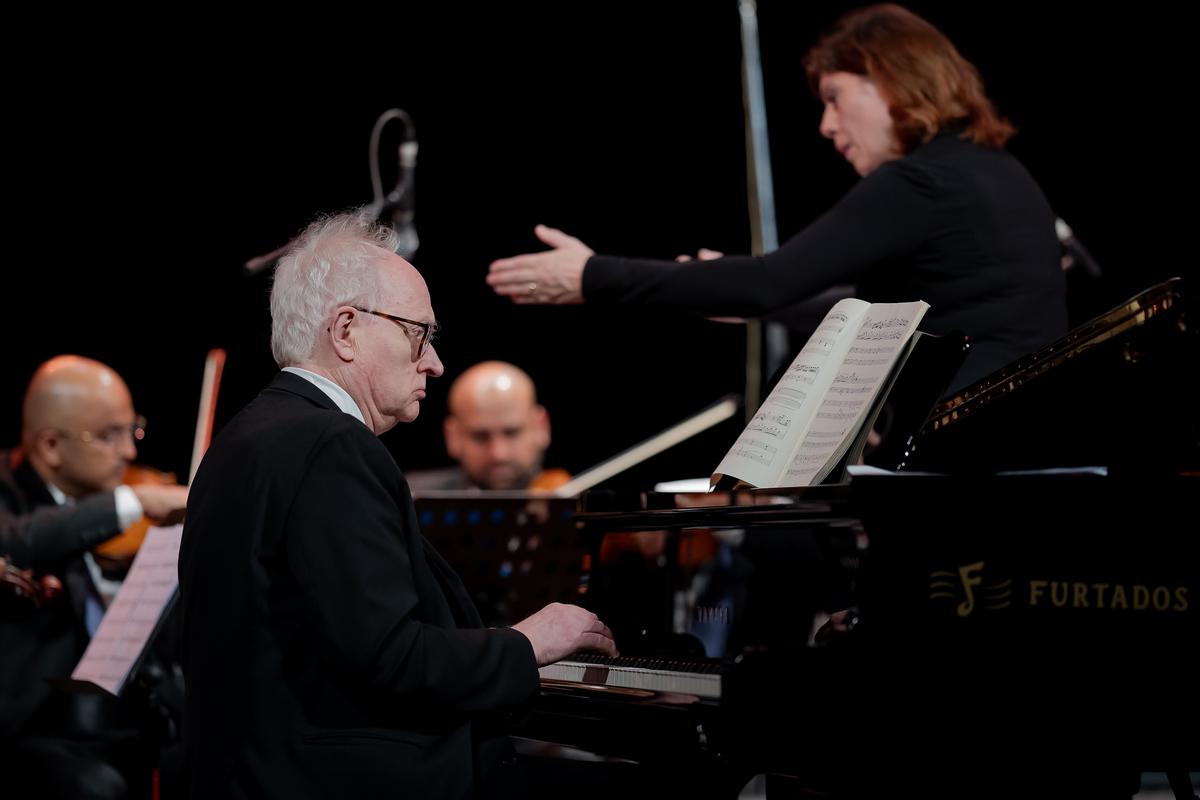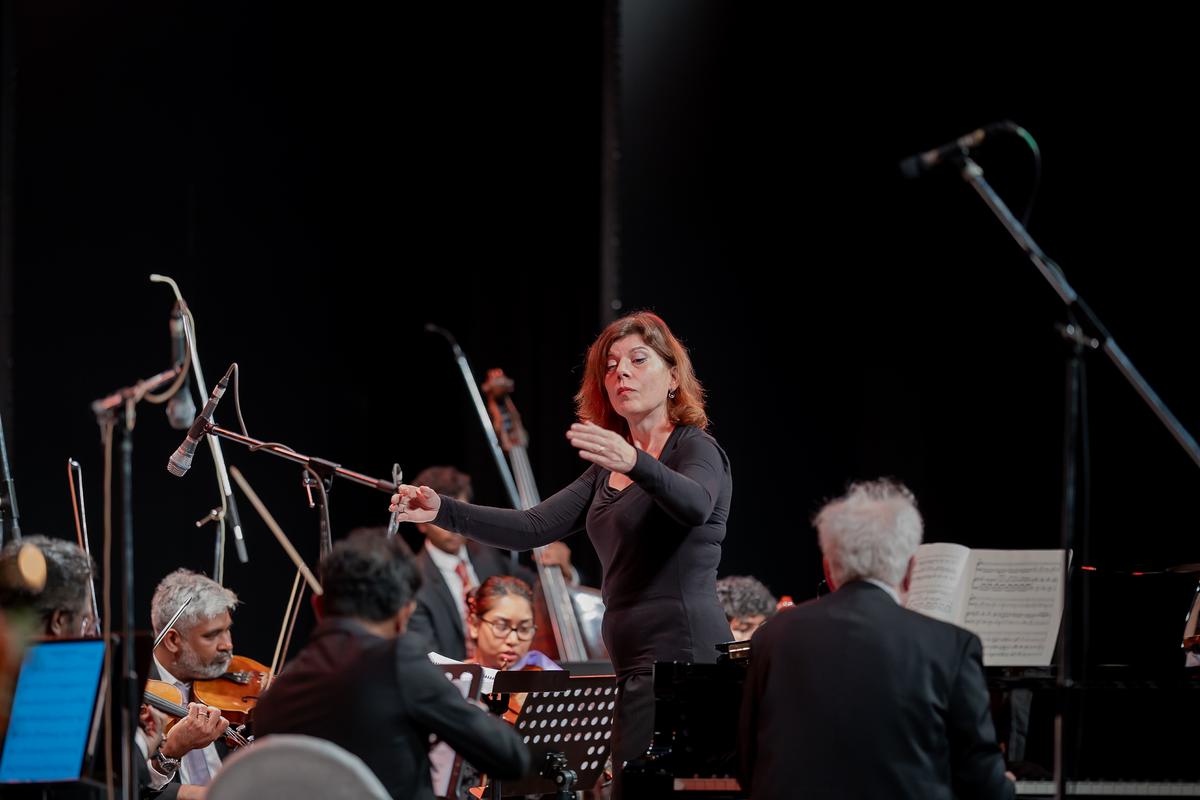Mozart’s last work was as mysterious as it was moving


The huge choir group that presented the evening of music.
| Photo Credit: Siva Raj
Swedish mezzo soprano/conductor Maria Forsstrom and pianist Bengt Forsberg, who delighted audiences in Bengaluru last year with Faure’s Requiem, were again in town, primarily for a performance of Mozart’s Requiem, a far more ambitious venture than their previous offering.
Given that the Swedish visitors were here for a short time prior to the main performance, great practical hurdles had to be overcome. Rehearsals required the assembling of two choirs of 47 people, and the Bangalore School of Music’s Chamber Orchestra, all people with full-time occupations. So it is even more creditable that such a production was undertaken and played to a full house at the Chowdiah Memorial Hall recently.
The Mozart evening started with individual contributions: Abendempfindung K523 was a strangely lugubrious opening. Though written at the same time as Don Giovanni and Eine Kleine Nachtmusik, it had neither the dramatic melodiousness of the opera’s arias nor the light charm of the latter. Instead, the melancholy piece dealt with a lover’s failed relationship and thoughts of death. But Maria’s feeling rendition could not have the desired effect on the audience, which was unfamiliar with German.
The mood was soon leavened with the Piano Concerto #12 in A Major. Joined by the strings of the BSM Chamber Music Orchestra, with Bengt masterful at the piano, and Maria conducting, this example of the composer’s early work was enjoyable, though not as substantial as his more mature work. As always, the second movement Andante was most appealing, its wistful melody, perhaps, an epitaph to Mozart’s former mentor Bach, who had just died. In the third movement Allegretto, the strings had a more active role, picking up some of the piano’s phrases. The evening’s main attraction, Mozart’s Requiem came after the intermission.
The programme notes (though the font was very small!) gave deserved credit to all the individual performers, besides being very informative.

Swedish mezzo soprano/conductor Maria Forsstrom and pianist Bengt Forsberg with Indian musicians at the show.
| Photo Credit:
Siva Raj
It is ironic that this popular work is known as Requiem, for Mozart died before it was completed and many composers have claimed its creation, or parts thereof. Mozart’s pupil Süssmayer was left with specific instructions for its completion. He collated his master’s sheet music but falsified the date of completion, adding the inscription “di me (“by me”) W. A. Mozart /1792”, and rewrote the entire composition in his own hand, making it impossible to identify the Mozart sections definitively. But Beethoven was dismissive of such doubts: “If Mozart did not write the music, then the man who wrote it was a Mozart”, and Beethoven’s admiration of the work is probably the reason it was played at the younger composer’s Memorial Mass.
The choice of von Spengel’s arrangement for strings and organ of the Requiem was dictated by the difficulty of assembling a full orchestra, underlining the drawbacks of launching an amateur production. The Introitus — a subdued opening at the best of times — made even less impact, with only string accompaniment. In the poignant sections of the work, Mozart used woodwind; and brass and timpani for the baleful Confutatis, though the choir provided the same formidable equivalent in the Dies Irae, where Mozart uses the choir’s homophonic and homorhythmic texture to convey the desperation of the text. In the Tuba Mirum [“Hark the Trumpet”], one missed the trombone that buoys up the wonderful bass voice. The electronic organ provided basso continuo, but did not compensate for the lack of brass and woodwind.

Maria Forsstrom conducting the choir.
| Photo Credit:
Siva Raj
Soprano Payal John, though lovely in voice, was rather soft when she started [though mics were judiciously interspersed] and lacked impact.
However, the four soloists were a pleasure to hear, particularly in the Recordare, the adverse drama of the previous sections alleviated by their lovely intertwined melodies.
Maria found conducting the ensemble challenging. For, she found that the orchestra had insufficient training in that individual players be cognisant not only of their instrument, but also what every other member is doing and how they mesh together.
Maria’s labours were rewarded as the Requiem was a great success, and it is to be repeated at St Mark’s Cathedral in March, and it may also be taken to Puducherry.

